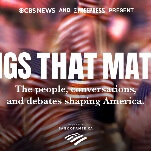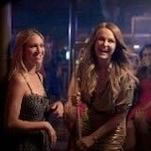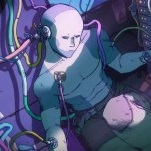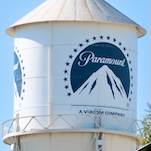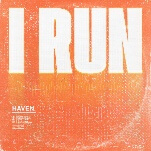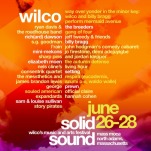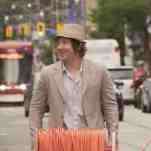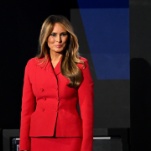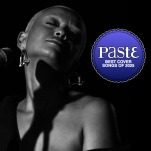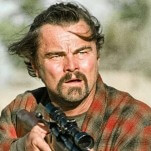For ’80s kids, there’s always been more than one Ghostbusters

The story is part of family lore, so the fine details are buried in the sands of time. But I know this: It was Halloween, I was trick-or-treating with my cousins in their suburban Detroit neighborhood, and my uncle had heard about a house on the block where the homeowner was planning tricks and treats for the kids. The trick: He was wearing a monster mask and hiding behind some object or another waiting to jump out at costumed revelers as they approached his door. I was dressed as either Superman, a pirate, or Detroit Tigers all-star Alan Trammell. I betrayed each and every one of these paragons of bravery and brawn when I ran in terror at the vague, adult-sized shape that had suddenly appeared to disrupt my Halloween fun.
The fallout from the event didn’t keep me from enjoying that Halloween or any Halloweens to come, but it took me years to get comfortable with some elements of the holiday. Any America’s Funniest Home Videos episode depicting similar pranks: Nuh-uh. The massive display of rubber masks at the local Halloween pop-up store? No thank you. Haunted houses? You’re kidding, right? The masked neighbor had accompanied his antics with a “spooky sounds” cassette, spoiling me on an entire genre of novelty recordings. My desire to never be scared like that again ran so deep, I didn’t see my first horror film until my senior year in high school. And even then, my best friends had to trick me into watching the original Nightmare On Elm Street by luring me over with the promise of a Toy Story movie night. (I wound up having a blast with it, but that’s besides the point.)
The mid-to-late-’80s were a tough time to be a skittish little kid falling in love with TV and movies. The decade’s slasher franchises were big business, which made it seem like there was a guy in a mask around every corner, ready to pounce. At the theater, a trailer starts out as an advertisement for a Tom Hanks comedy—then a chainsaw rips through the wall. I’m watching TV with a babysitter, and Chucky shows up during the commercial break. Mom takes me to Toys R Us, and I do an abrupt 180 when I discover an end cap of Matchbox’s talking Freddy Krueger dolls.
But if that display was occupied by the earthly, gooey form of Gozer The Destructor (a.k.a. Gozer The Traveler) I would’ve gone running toward it. Despite my scaredy-cat ways, I couldn’t get enough of ghosts and the paranormal investigators who busted them. Fortunately, Hollywood gamesmanship produced a supply to meet my demand: In 1986, legal wrangling over the Ghostbusters name yielded not one, but two animated TV series about independent contractors specializing in spirit abatement. Debuting in daytime syndication on September 8, Filmation’s Ghostbusters was a sequel to The Ghost Busters, a live-action Saturday-morning series from 1975. Five days later, ABC unveiled an adaptation of the big-screen comedy that had licensed its title from The Ghost Busters two years prior. To make it abundantly clear which was which—and to add a perfectly Peter Venkman “Nyah nyah” in Filmation’s direction—the second series was called The Real Ghostbusters.
But to my pre-school mind, ghostbusters were ghostbusters, whether they palled around with a literal grease monkey (well, grease gorilla) or a class-five free-roaming vapor. I understood the separation—I never expected the guys from Ghost Command to show up at the firehouse (or vice versa)—but it never swayed me toward one camp or the other. If my recollections of Egon, Peter, Ray, and Winston are fonder than those for Jake, Eddie, and Tracy, it’s because I got to spend more time with the former: The Real Ghostbusters ran for seven seasons and 140 episodes, as opposed to the single 65-episode season of Filmation’s Ghostbusters. I held on to my Real Ghostbusters toys, while their Filmation counterparts were purged in a long-ago garage sale. I even kept a VHS cassette of Real Ghostbusters episodes compiled by my parents, which was invaluable when it came time to revisit the series.
If the “real” in Real Ghostbusters was intended to tar its competitor as an inferior product, that intention sinks in nearly three decades later. With its colorful rogues’ gallery (“Fangster! Werewolf of the future!” “Mysteria, darling: Mistress of mists.” “I say: I’m The Haunter, civilized hunter of haunted prey!”) and involved transformation sequences, Filmation’s Ghostbusters often feels like an occult translation of the studio’s big ’80s hit, He-Man And The Masters Of The Universe. The good guys and the bad guys each get their own Orko (little pink bat Belfry for the Ghostbusters, hovering chimera Brat-A-Rat for the ghosts), and mercurial archenemy Prime Evil is basically Skeletor reborn as an organ-key-mashing, robotic sorcerer from beyond the grave.
But I’ll give this to Filmation’s Ghostbusters: In a head-to-head competition between two fantastical premises, Filmation’s efforts top The Real Ghostbusters for sheer zaniness, from the many skeletal appliances that assist Jake and Eddie’s efforts, to the Hieronymus Bosch blacklight poster that serves as the backdrop for the boys’ high-tech changing room. That sharp look just comes with a certain rigidity: in the restricted movements of its characters, and in the unwavering story structure of its scripts. Following the time-hopping five-part story that opens the show, Filmation’s Ghostbusters gives way to rhythms that belie the ’70s Ghost Busters’ debts to Scooby-Doo and his many Hanna-Barbera kin: First act check-ins with the heroes and Prime Evil, the dispatching of Prime Evil’s spectral minion of the day, Jake and Eddie’s minute-long changing sequence, and a climactic face-off between good and evil. The show’s setup and inventive designs pushed the limits of childhood imagination, then reinforced those limits with cookie-cutter plots.












